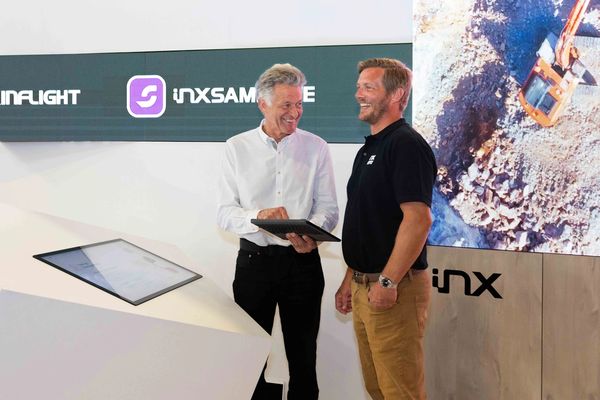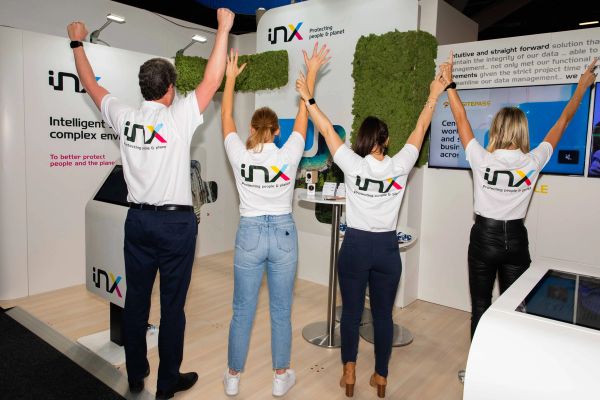Do you know how many leads you need to collect at a trade show to get a 5x or 10x return on your investment?
We know from experience that you probably don’t, because, like most people, you think it’s impossible to track the ROI of a trade show.
There’s a belief that exhibitions don't work – that there IS no ROI.
We’re here to tell you that that isn’t true, and that, regardless of what your goal for attending a trade show is, you should always be tracking your ROI.
ROI is a vital pulse check to track what is and what isn't working at your events, but most people have no idea where to start in order to track it.
In this blog, we’ll show you how to calculate your trade show ROI, help you figure out just how much money you're making, and whether your events are supporting your overall business strategy.
Why is it Important to Measure Trade show ROI?
Calculating the ROI of trade shows isn't just about counting the cash you make right after the event. It's really about understanding how well you're using your resources to open up long-term business opportunities.
Measuring ROI can help you:
- Make Smarter Decisions: When you know your ROI, you can figure out which trade shows are worth your time and which aren’t, based on actual data from past events.
- Allocate Resources Wisely: Understanding what’s working lets you better distribute your budget, staff and time to where they make the most impact.
- Refine Your Strategies: Regularly measuring your ROI helps you tweak and improve your approach to events, making sure each one is better than the last.
- Be Ready to Report: Sooner or later, someone’s going to ask if that trade show was worth it. Knowing your ROI means you’ll have a solid answer ready to go.
Measuring ROI also helps you see the bigger picture, like how a trade show boosts your brand or positions you in the market. These benefits might not show up in your immediate revenue but they play a crucial role in your business's growth over time.
Key Metrics You Can Track
To effectively measure your trade show ROI, you need to include many metrics that help you assess the success of your participation. Here’s what you should track:
Costs
Understand the full scope of your financial investment by tallying all expenses related to the event. This includes:
- Exhibit rental
- Exhibit design and construction
- Travel expenses accommodation for staff
- Staff wages
- Marketing and Promotional items
- Giveaways and merchandise
- Any other incidental expenses.
Leads
- Capture Details: Use a lead capture system to collect data on everyone who interacts with your booth. This could be through scanning badges or a digital sign-up.
- Categorise Leads: Classify leads into hot, warm and cold based on their interest level and likelihood to purchase, which helps prioritise follow-up.
Sales
- Initial Sales: Record any sales made directly at the show.
- Follow-Up Sales: Track any subsequent sales that can be directly linked to leads generated at the trade show. Monitor these conversions over a set time frame, such as 3, 6, or 12 months, to accurately attribute them to the event.
Engagement
Evaluate how attendees interacted with your booth. Note the number of product demos you gave, informational sessions attended and any interactive elements that engaged visitors.
Feedback
Collect feedback from attendees and your team members. This feedback provides insights into what worked, what didn’t and how you can improve future trade show experiences.
Understanding Staff Costs and Interaction Capacity
Often neglected, getting a clear picture of your staff costs and interaction capacity at trade shows helps to maximise efficiency and align your resources effectively. It highlights the true cost of your conversations.
1. Staff Hourly Rate:
Knowing the hourly rate of your staff helps you understand the true cost of interactions at the trade show. This ensures your staff remain focused and efficient.
2. Interaction Capacity:
Calculation Method: Determine the maximum number of people your team can comfortably interact with during the show. This is calculated by multiplying the number of show hours by the number of staff and the number of interactions each staff member can handle per hour.
Example: The show lasts for 3 days, each day has 6 hours. You have 2 staff members, each can handle 6 interactions per hour. The calculation would be:
18 hrs × 2 staff = 36 staff hours
36 staff hours × 6 interactions per hour = 216 total interactions
If your event expects 450 attendees, the number of missed interactions is 450 - 216 = 234
If you would like the chance to close that number, you could decrease interaction time, increase the amount of staff working or better optimise your engagement methods.
3. Cost Per Hour:
Calculation method: Calculate the cost per staffed hour by dividing the total investment in the show by the total number of staff hours.
Example: If you have invested $15,000 and you use 36 staff hours, the cost per hour is $416.66.
15,000 ÷ 36 = $416.66
4. Cost Per Interaction:
Calculation method: Determine the cost for each interaction by dividing the total show investment by the total number of interactions.
Example: Using the same $15,000 total investment and 216 interactions, the cost per interaction is $69.44.
15,000 ÷ 216 = $69.44
Perform these calculations before the show for initial cost analysis and after the show to assess revenue impact. Compare these metrics with other shows to evaluate performance and identify areas for improvement.
Understanding and calculating the ROI of your trade show participation will lead to more informed decision-making that enhances your business outcomes. By diligently assessing direct and indirect costs, tracking interactions and analysing immediate and long-term sales, you ensure that every dollar spent is an investment towards growing your brand and business. And remember, the insights gained from these analyses should go towards refining your strategies and achieving greater success in future trade shows.
Want a second pair of eyes on your trade show numbers?
In a quick, no-pressure 15-minute call, we’ll review your ROI together, uncover hidden opportunities, and identify what’s holding back your results.
Book your complimentary ROI Review


